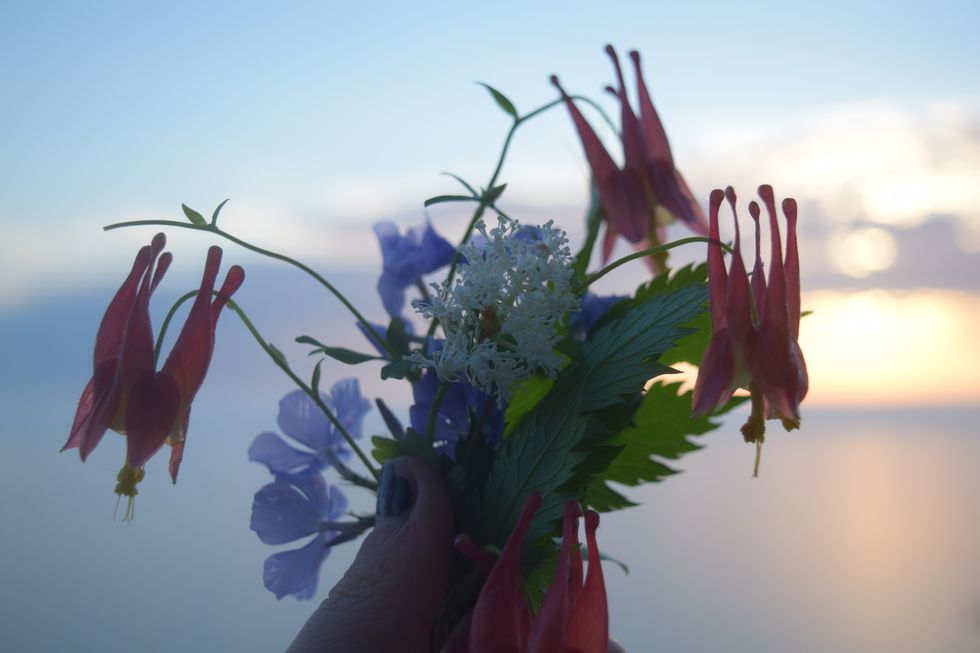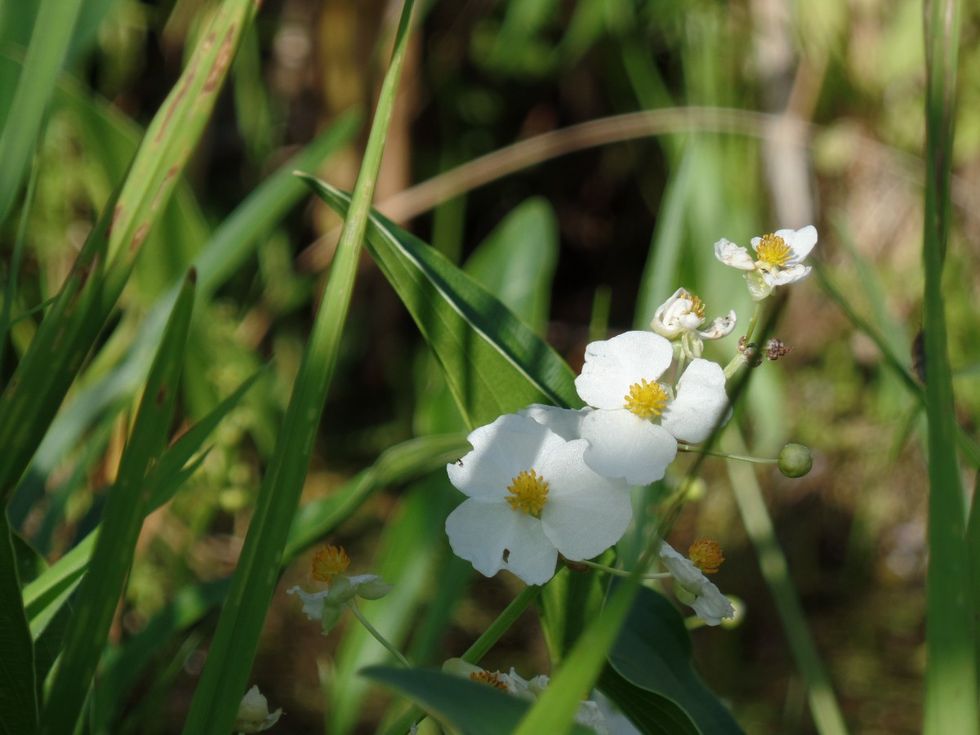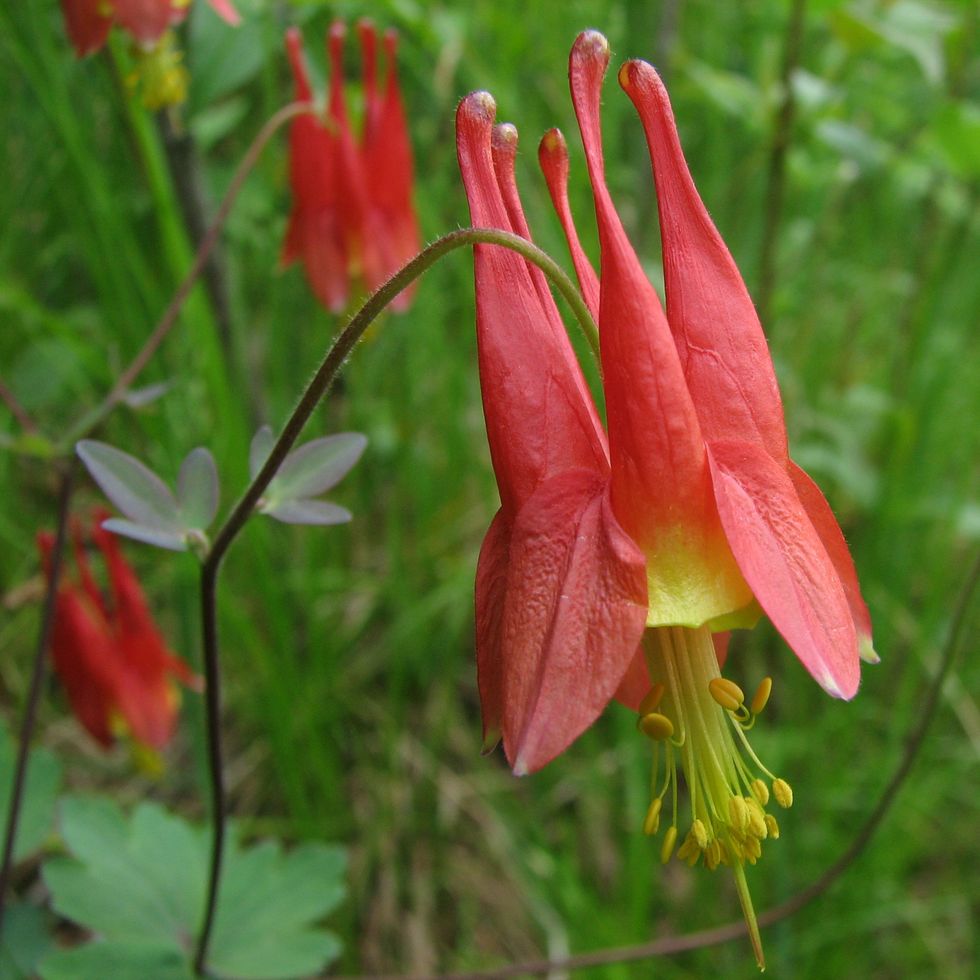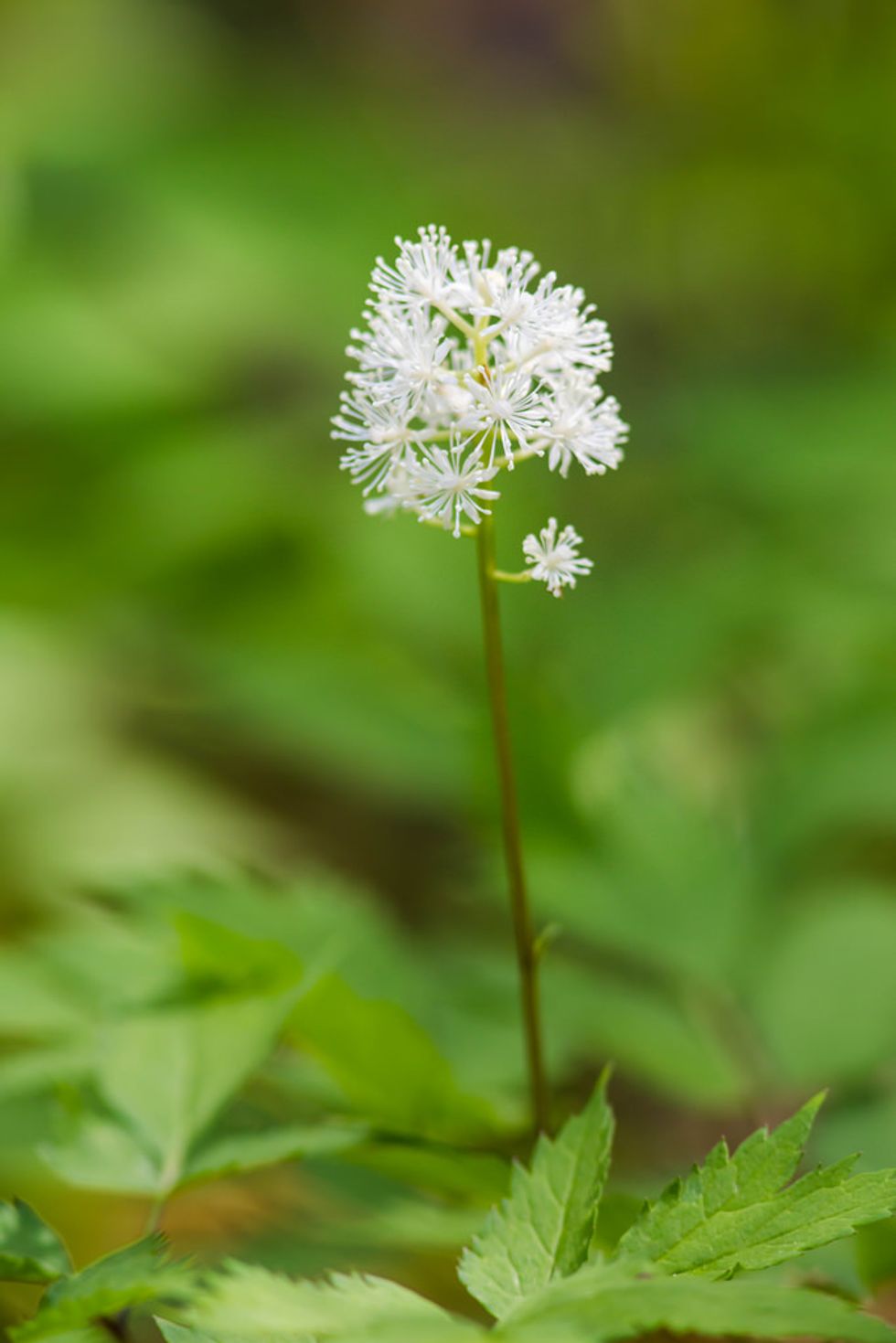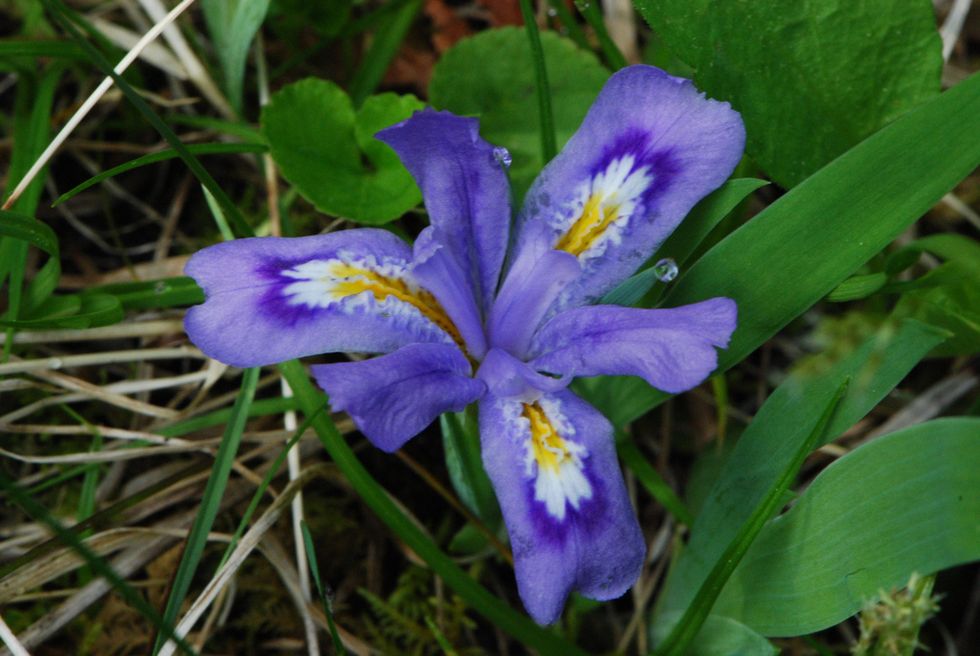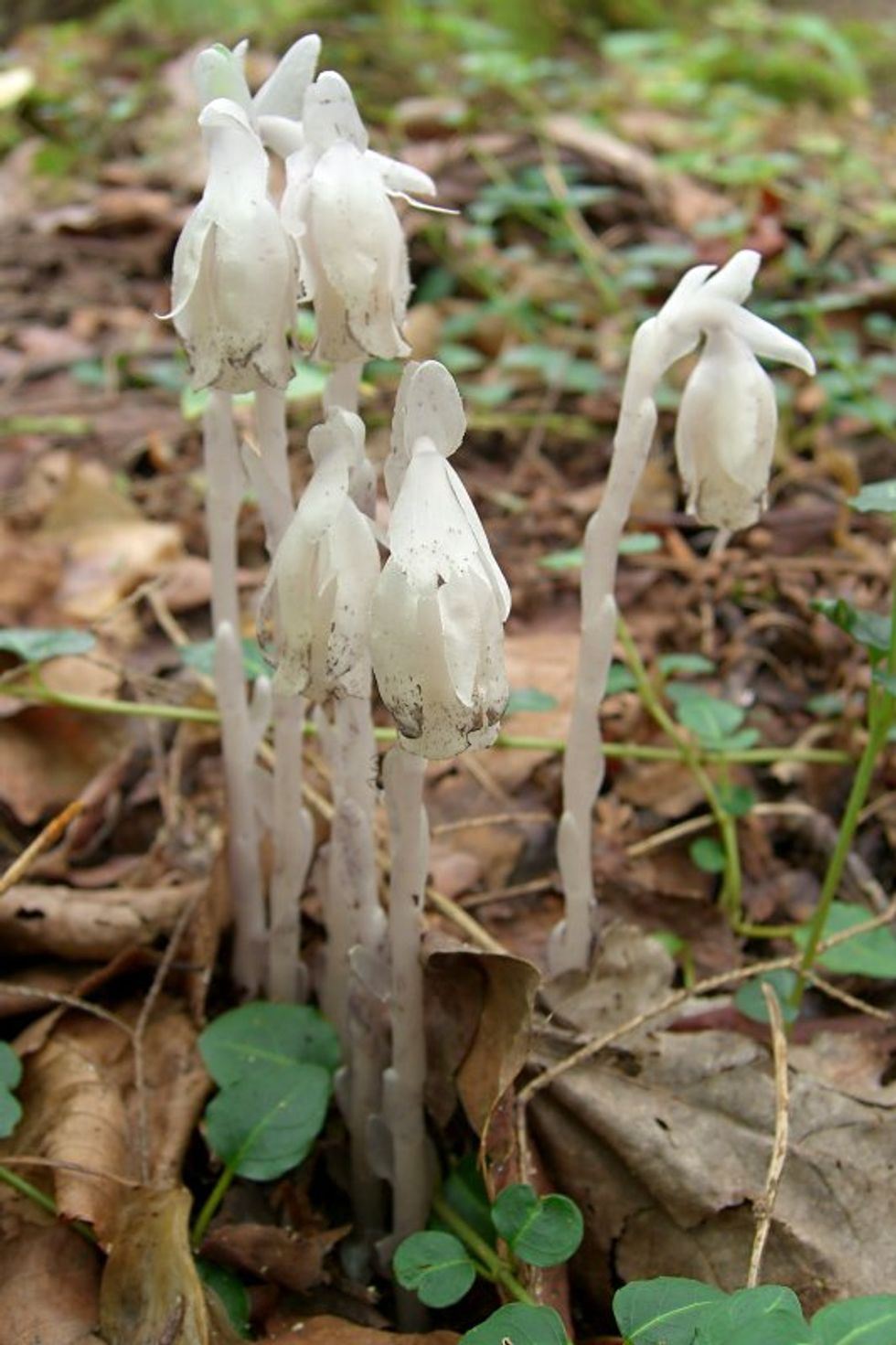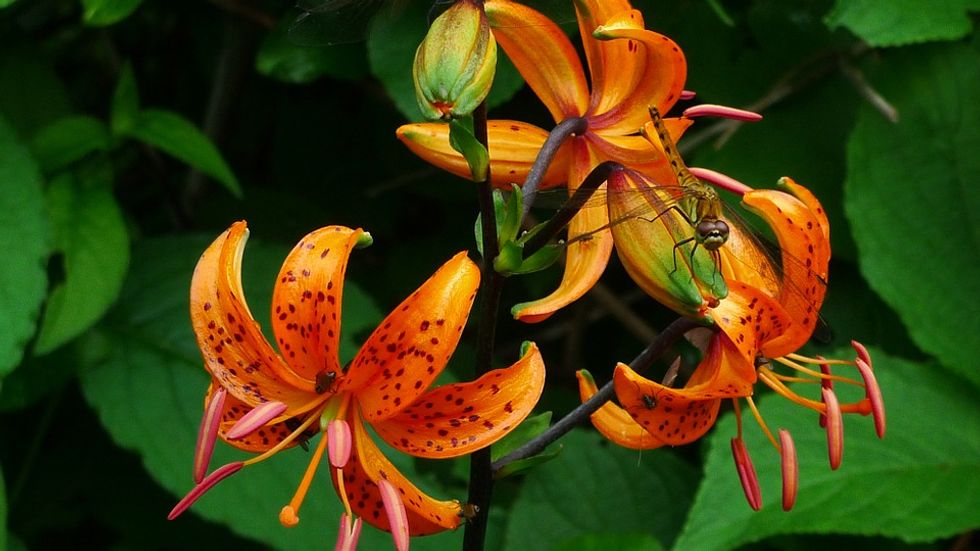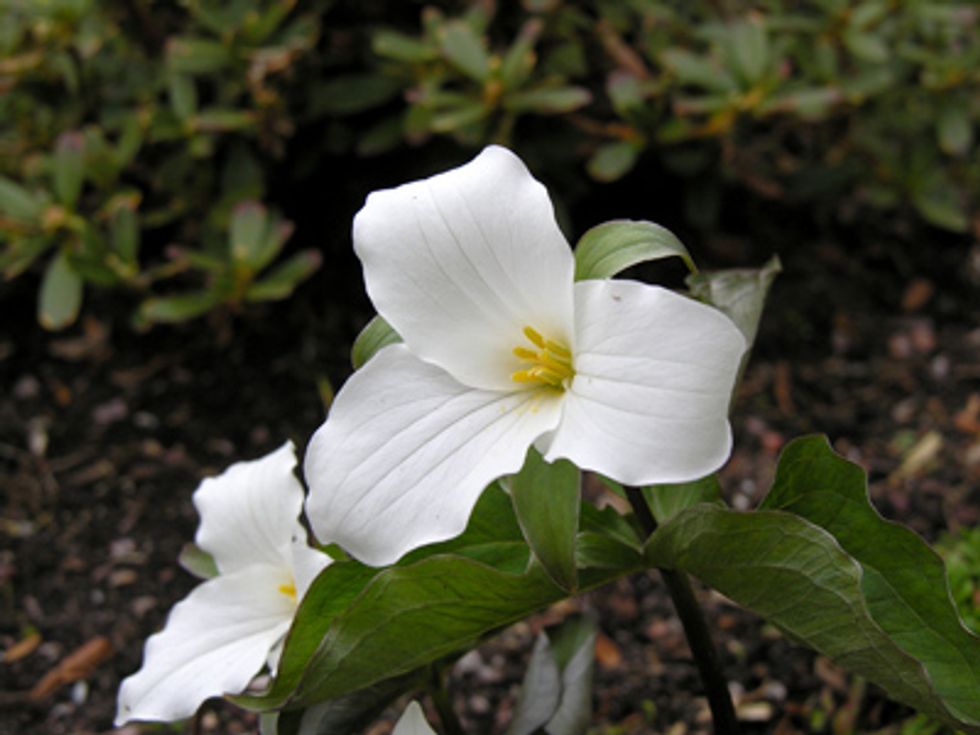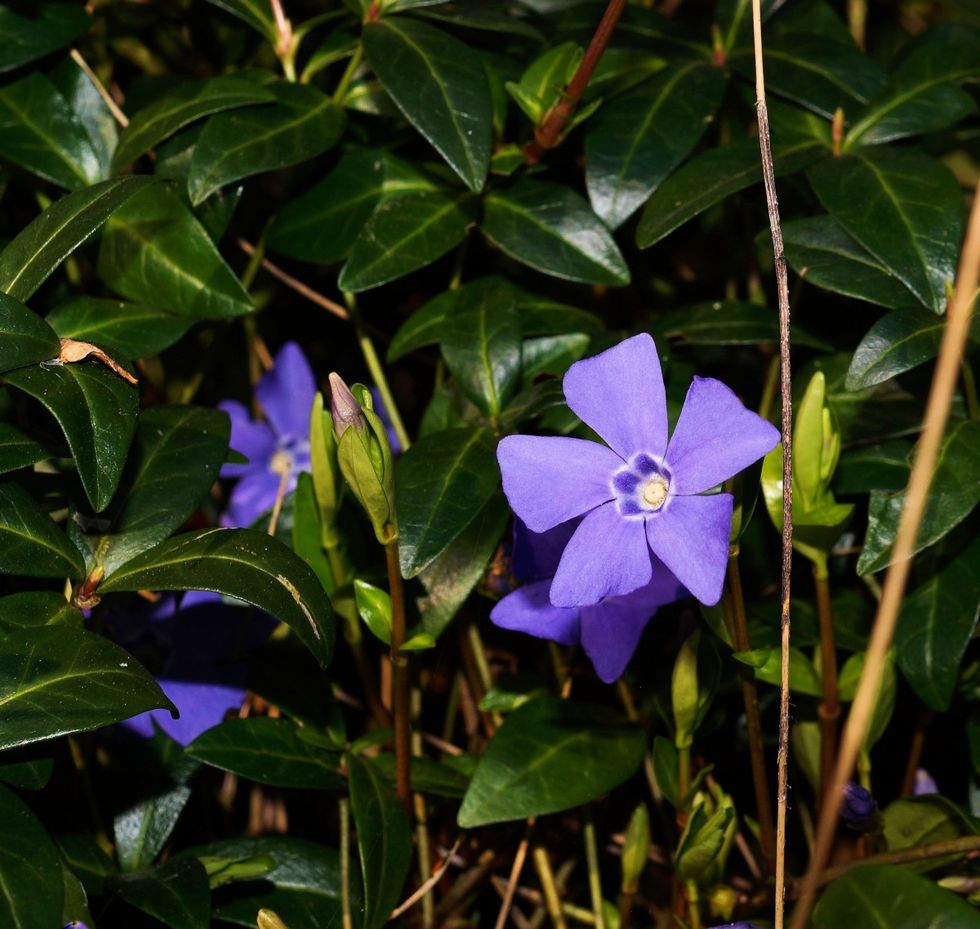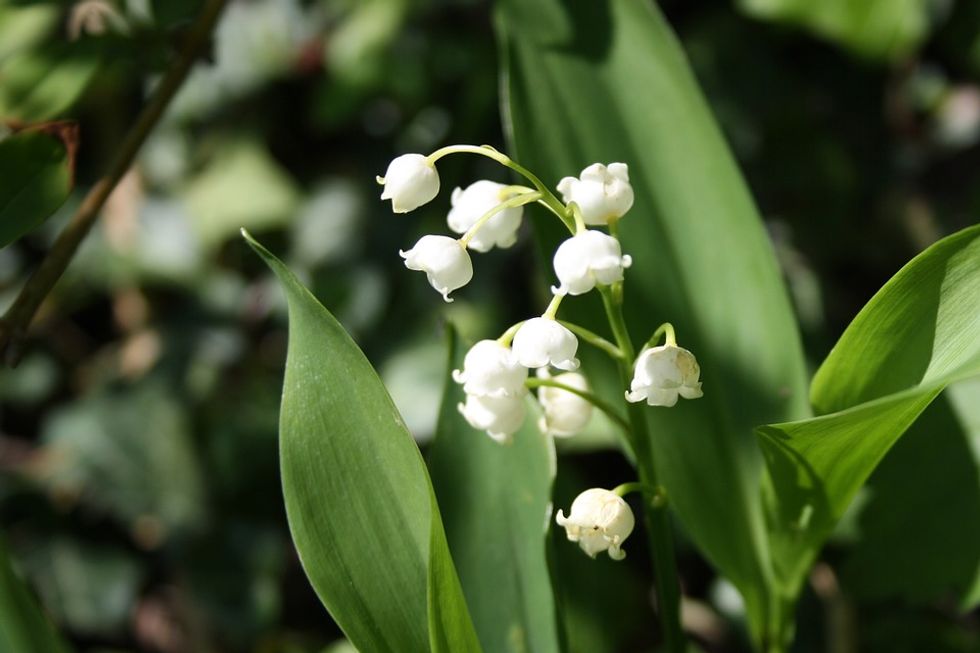1. Arrowhead
Latin name: Sagittaria latifolia
Also known as the Broadleaf Arrowhead, this wildflower is found in wetland habitats or marsh-like soil. Look out for three wide white petals and a bristly yellow flower, about three feet tall on a tubular stem. The Arrowhead is a perennial, meaning, it regrows every spring, year after year, from the same persisting roots. It blooms late-spring and throughout summer.
2. Wild Columbine
Latin name: Aquilegia canadensis
This beautiful bell-shaped flower with bulbish nectar tips grows in deciduous, woodland areas, but look out for the striking red petals and dangling yellow seeds contrasting among clearings and river banks. Among its pollinators are hummingbirds, butterflies, and hawk moths. It flowers May through June.
3. Baneberry
Latin name: Actaea pachypoda
The Baneberry, also known as Doll's Eyes, is a poisonous native perennial sprouting 1 to 3 feet tall. The wildflower typically blooms from April to June and is found in shady deciduous wood or wetlands. The tiny flower clusters and bud at the very tip of the stem, and are a perfect home for caterpillars and other tiny creatures.
4. Dwarf Lake Iris
Latin name: Iris lacustris
This droopy, delicate flower is a threatened species located only in Great Lakes regions. You'll have to look close to the ground as this plant grows only 6 to 8 inches tall and flourishes in low, boggy spots only in May. The sword-like light green leaves cluster around the petal, usually a purply blue with a yellow nucleus surrounded by white. It is Michigan's official wildflower!
5. Indian-pipe
Latin name: Monotropa uniflora
Known to many as the Ghost Flower, the white tendrils lurk among the forest floor, only up to 6 inches tall, relying on the soil for nutrients rather than the sun. After the plant is pollinated, it blackens and straightens, almost looking as if it was set on fire (where it may sometimes be called the Corpse Plant). Indian-pipe can flower anytime from the beginning of Summer to early fall.
6. Lily
Latin name: Lilium michiganense
The Michigan Lily blooms from early to midsummer, needing a sunny location to flourish. It can be found in wet meadows or near roadsides, as well as prairies, woodlands, and thickets. It is one of the most beloved native perennials, as its blooming period lasts only about a month, and it is one of the only orange Michigan wildflowers. The flower hangs like an ornament until it's ready to open up, showing the beautiful petal markings and pink seeds.
7. Trillium
Latin name: Trillium grandiflorum
Trillium can be found in moist forested areas. The perennials can reach anywhere from 8 to 18 inches, and sprout a single three-petaled flower that pinkens with age. It is usually found in a large colony and they begin to blossom in late spring to summer. It is a spring ephemeral, meaning it lives a short life cycle before it dies back to its underground roots.
8. Myrtle
Latin name: Vinca minor
Commonly known as Periwinkle, the common wildflower covers the terrain with dark green shiny leaves, and a simple five-petaled purple-blue flower growing between 2 and 4 inches. Introduced from Europe, the non-native perennial now dwells and borders many Michigan forests. To many, it is merely a weed, but to others, it makes a nice groundcover in the shade.
9. Lily of the Valley
Latin name: Convallaria majalis
Though regarded as beautiful and mythical, Lily of the Valley is both an invasive and poisonous wildflower. The perennial plant thrives in shaded, cool settings and spreads fairly quickly, which can make it more of a nuisance than a woodland virtue. Find these tiny bell-shaped flowers sheltered with big oval leaves beginning to bloom in May.

